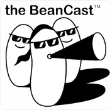What do we do about LinkedIn?
We've discussed the business-focused social networking site a number of times on The BeanCast marketing podcast, but we've never really delved into why it's so often dismissed by so many of its users. I think Ben Kunz said it best with his description that became the title of this post. It does its job, but there's nothing to really get excited about.
Clearly it's easy to dismiss the service. But before we do, we have to consider that fact that LinkedIn really does have a lot going for it. Because whereas most social network participation is done purely by choice, LinkedIn has established itself as a necessity. You quite literally can't expect to be in the white collar job market today without a LinkedIn profile, and some employers will only consider candidates with 100% complete profiles (meaning, detailed information and recommendations from past associates).
For marketing consultants like me it's become an essential tool as well. Sending over a resume makes me a job seeker. But pointing people to my LinkedIn profile is a great way for people to get these facts in a much more engaging (and dare I say, less supplicating) format.
And how about those search rankings! Ever Google your name? If you have a LinkedIn profile, chances are it will be the first result. I don't know about you, but for me it's also consistently the top "search engine" for driving traffic to my site. How 'bout dem apples?
They're even making money! Two years in the black, according to founder, Reid Hoffman, with 2008 earnings that probably hit around $100 million.
And in a world of "we'll sell ads" business models, they have an actual plan in place that is working. They are generating money from premium accounts, job listings, and a handful of legitimate business advertisements. Imagine that! Charging for their services.
So why the rampant disregard? I would say it's three things:
People Don't Like Work
Some of you may love your job out there. But most of the rest of America doesn't. So expecting people to network on LinkedIn in the same way they do on Facebook or Twitter is akin to asking them to ski on asphalt -- you can do it, but what's the point?
Professionals know they need to network and even have fun doing it sometimes, but given the choice they would rather hang out with their friends and talk about the game or the family or gardening or something. So of course LinkedIn doesn't have the same "cool" factor as these other sites. It can't. It never was meant to be that engaging.
It Breaks the Rule of the "Free"
When's the last time you heard a social media "guru" praise LinkedIn? I can honestly say I've never heard it praised. Not even once. It's always presented in a "it has its place" sort of embarrassed, dismissive way. I've done it too. Which I'm now convinced is partly because it doesn't fit the models that we all are propagating.
You're not supposed to charge users! Only advertisers should be charged. But as M.M. McDermott pointed out via Twitter, "Everything's a personal advertisement on LinkedIn." So while the base service is free, the premium services are walled off for subscribers. It's an old model, but it works because the content and services offer measurable and money-making benefits. There's simply nothing for the social media hype machine to crow about.
It Remains Irrelevant Most of the Time
While it's strong among the jobless (Debbie Durst said at one recent LinkedIn event, 70% of the attendees were job seekers), even in "these tough economic times®" that still represents only about 11-15% of the population at large and many of the unemployed are blue collar. To the rest of us, its just something we periodically update (like a resume), but largely ignore. If there's one valid criticism out there about LinkedIn, it's this one. It's clearly a spot of untapped potential.
While they are definitely making money and deserve more credit than they get, they're leaving too much on the table. And I'm not talking chat rooms and status feeds, which we already know won't be used in this venue. I'm talking about things that can make it relevant to more areas of our professional lives.
Where are the training opportunities? (They should be the main conduit out there for online professional training.) Where is the active outreach to professional organizations to create and manage groups? (Having set up such a group, I can say they are definitely not addressing the questions, nor hand-holding the unique needs that such organizations have.) Where are the lead management systems? Where are the mobile apps that use the information in interesting ways, rather than just spitting out the website data. The list can go on and on.
LinkedIn is just what Ben Kunz says it is. It's crusty. It's cold. But clearly it can be much more than this. And that's what's most frustrating.

